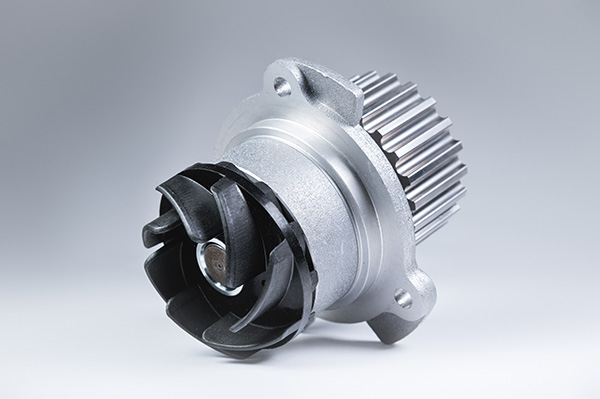
Your vehicle’s water pump keeps the engine at the right operating temperature. It circulates coolant through the engine block, cylinder head, hoses, and radiator, ensuring heat is carried away from the engine and dispersed efficiently. If the pump isn’t working properly, the coolant flow slows or stops, causing the temperature to rise quickly. Left unchecked, overheating can warp engine components, blow head gaskets, and lead to costly repairs.
Early Signs of Water Pump Trouble
Water pump issues rarely happen all at once. More often, they develop gradually, and catching them early can prevent a sudden breakdown. A few signs to watch for include:
Coolant leaks near the front center of your engine. The water pump has seals and gaskets that can deteriorate over time, allowing coolant to drip out.
High-pitched whining noises from the front of the engine, which can mean the pump’s bearings are wearing out.
Overheating during drives, especially at higher speeds or under load, when the pump is supposed to be circulating coolant at full capacity.
If you see any combination of these symptoms, it’s time to get your cooling system checked before the pump fails completely.
Why Overheating Can Happen Suddenly
One of the frustrating things about water pump failure is that it can seem to come out of nowhere. Your car may run fine for weeks, and then suddenly, the temperature gauge spikes. This can happen if an already weak pump can no longer move coolant effectively, or if a leak has lowered coolant levels to the point where the system can’t do its job.
Overheating is one of the most dangerous situations for your engine. Even a few minutes at excessive temperatures can cause permanent internal damage. That’s why it’s important to shut down your vehicle immediately if you see the temperature gauge rising into the red zone.
How Mechanics Diagnose a Failing Water Pump
When you bring your car to Just Automotive with signs of overheating, the inspection starts with checking coolant levels and looking for visible leaks. From there, our technicians may remove the belt to spin the pump by hand, feeling for roughness with the bearings. We’ll also check for coolant seepage from the pump’s weep hole—a small opening that allows leaking coolant to escape when internal seals fail.
Sometimes, overheating can be caused by other cooling system components, like a clogged radiator, a faulty thermostat, or a broken fan. That’s why a full cooling system check is essential before replacing parts.
Preventing Future Water Pump Failures
While no part lasts forever, you can extend the life of your water pump with proper maintenance. Regular coolant changes keep the system clean and protect the pump’s seals and bearings from corrosion. Driving with the correct coolant mixture also prevents overheating and freezing damage in extreme temperatures.
It’s also a good idea to have your water pump inspected during timing belt replacements if your vehicle has a belt-driven pump. Since the same labor is involved in reaching both parts, replacing them together can save you money in the long run.
Keep Your Engine Protected With Just Automotive
At Just Automotive in Williamsburg, IA, we know how stressful unexpected overheating can be. Our team will quickly identify whether your water pump is the cause and offer reliable repair or replacement options. We use high-quality parts to ensure your cooling system stays dependable for miles to come.
Don’t wait until your engine is at risk. If your car has been running hot, losing coolant, or making unusual noises from the front of the engine, schedule a visit to Just Automotive today and keep your engine running at the right temperature.